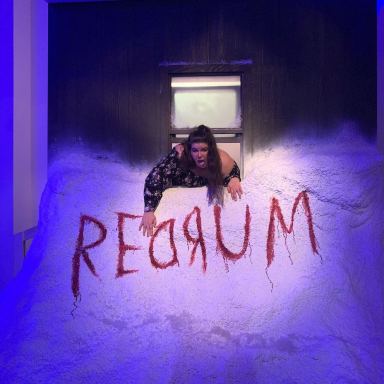30+ Movies About the Roman Empire
Here are the must-see movies about the Roman Empire.

The Roman Empire—which lasted roughly 500 years and whose reach extended through most of southern Europe, the Middle East, and northern Africa—was perhaps the most powerful governmental entity in world history, one that may possibly never be matched in strength, breadth, and longevity.
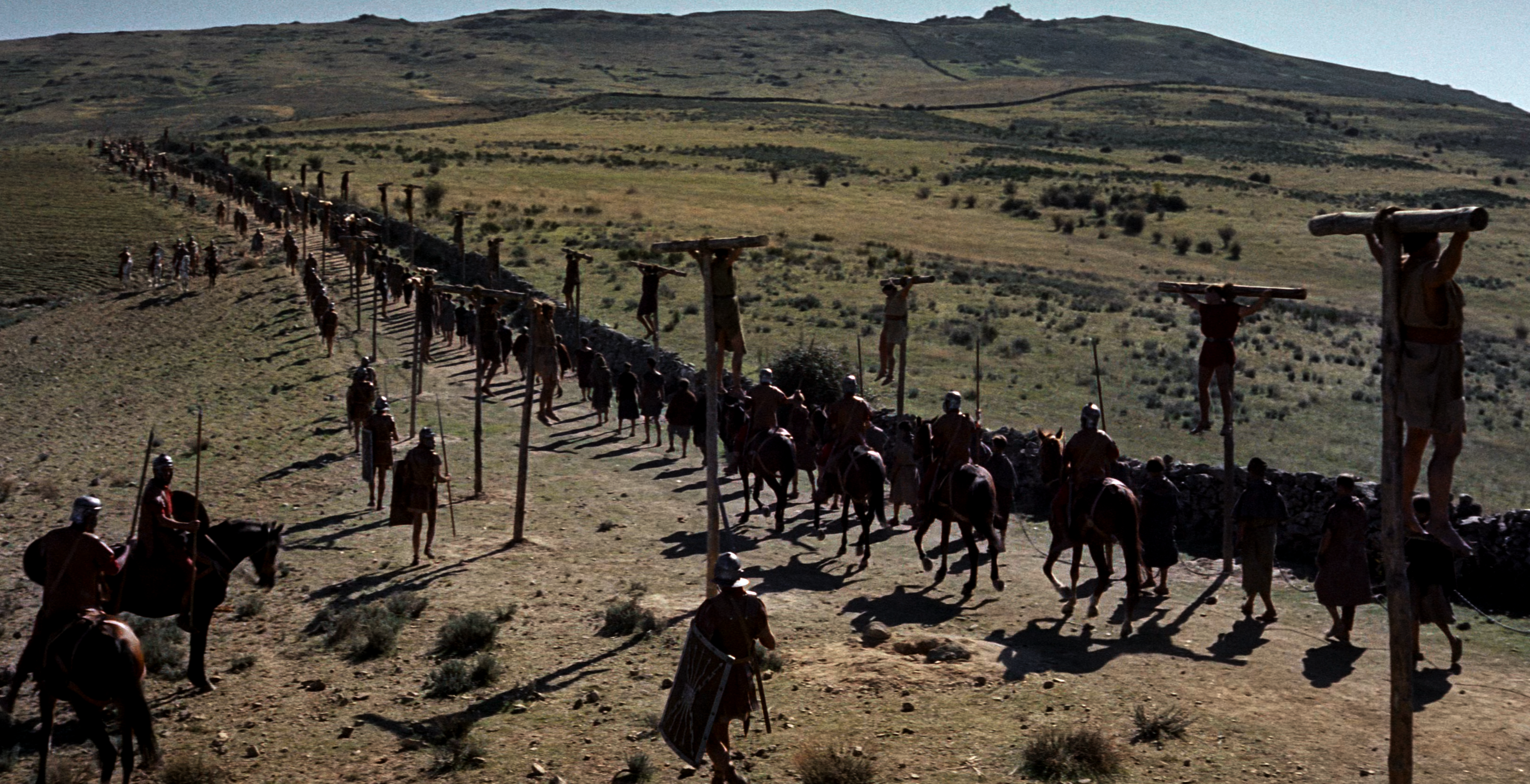
Two things spelled the Empire’s destruction, though: 1) its imperial ambitions, which led to massive resentment among slaves and conquered peoples; and 2) the rise of Christianity, which initially led to the Dark Ages but allowed for Europe to later reorganize itself under a common religious identity.
Of all the epic tales told in Hollywood, historical dramas about the Roman Empire and ancient Rome are some of the most beloved. The “Swords and Sandals” genre has led to some of the most expensive and most successful films in cinematic history. What follows are some prime examples.
Best Movies about Rome
Quo Vadis (1951)
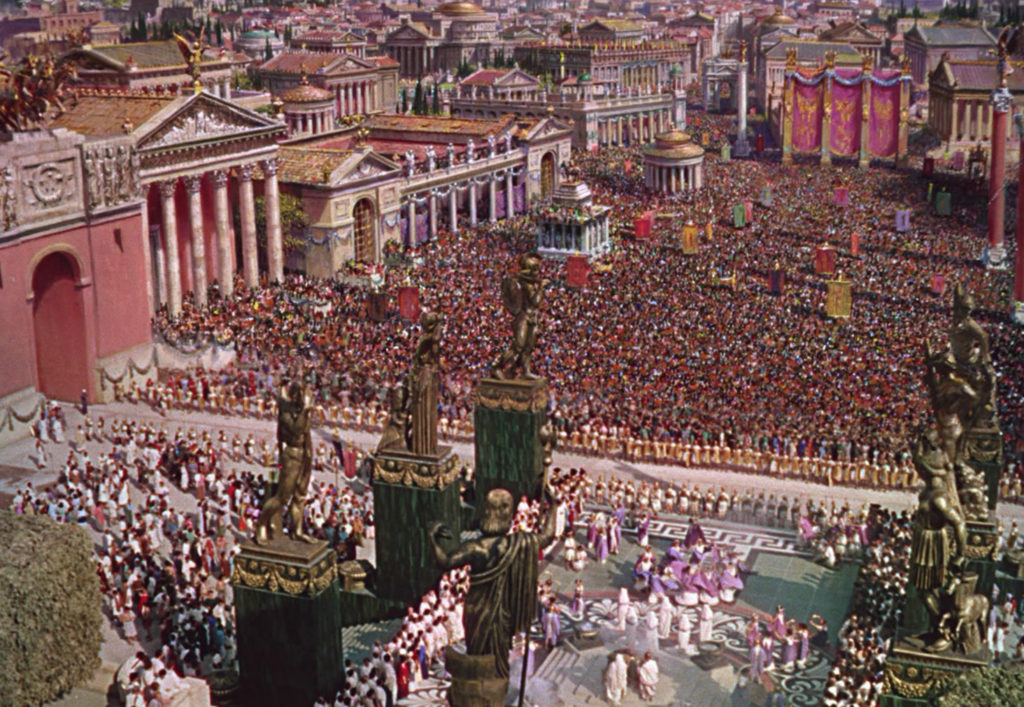
This is the first of the big-budget/large-scale recreations of the Roman Empire that would dominate Hollywood in the 1950s and early 1960s—to give you a sense of what a massive production this was, over 30,000 extras appeared in the crowd scenes. Two future Hollywood female superstars, Liz Taylor and Sophia Loren, appear as uncredited extras. The title means “Where are you going?” in Latin, and the story revolves around emergent tensions between decadent Romans and persecuted Christians. A Roman commander operating under the authority of the corrupt Emperor Nero falls in love with a Christian slave girl, and his infatuation with her leads to his religious conversion.
The Robe (1953)
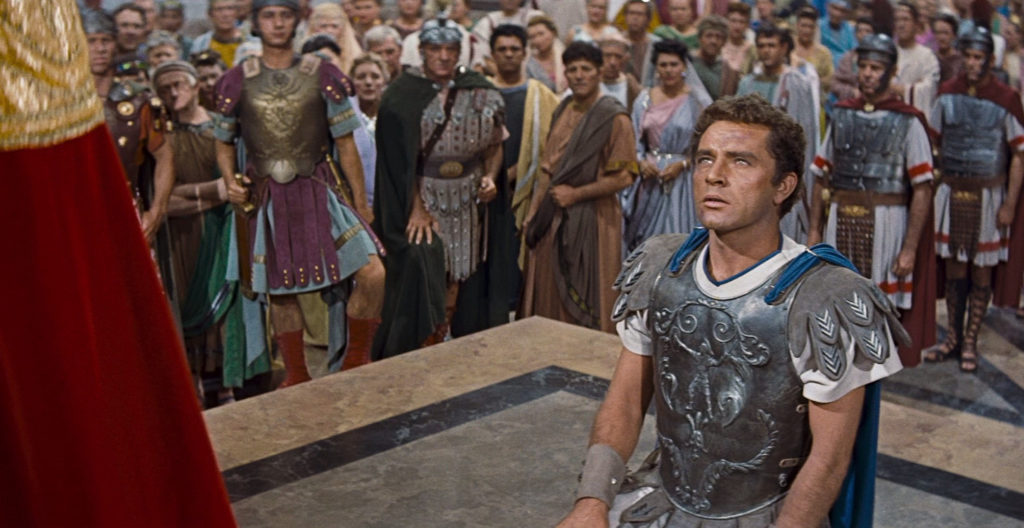
Richard Burton stars as Marcellus Gallio, a Roman soldier in the province of Judea who oversees the crucifixion of Christ. In a dice game, he wins the robe worn by Jesus but suddenly becomes overwhelmed with guilt about his role in the crucifixion. Variety offered effusive praise: “It is a ‘big’ picture in every sense of the word. One magnificent scene after another, under the anamorphic technique, unveils the splendor that was Rome and the turbulence that was Jerusalem at the time of Christ on Calvary.” The Robe was the top-grossing film of 1953.
Julius Caesar (1953)
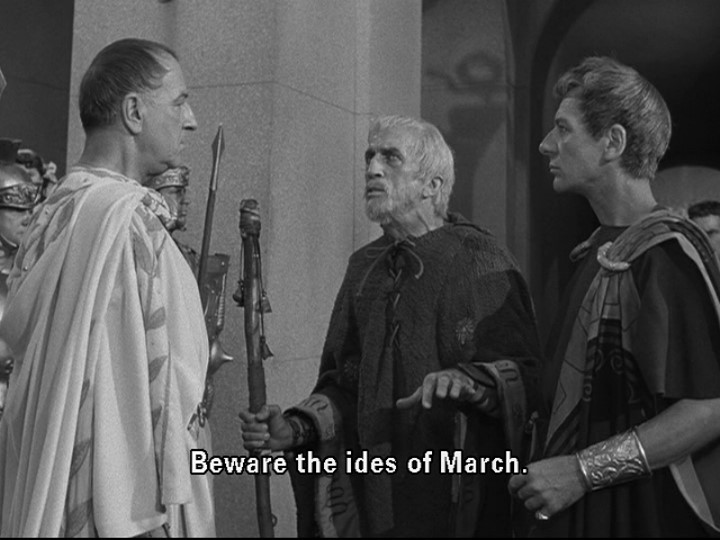
This is the most venerated of several film adaptations of the Shakespeare play, earning Marlon Brando a Best Actor Oscar nomination for his furrowed-brow portrayal of Marc Antony and winning the Academy Award for Best Set Decoration. Brutus (James Mason) becomes concerned for Julius Caesar (Louis Calhern) after Cassius attempts to involve Brutus in a political assassination of Caesar. A review in Harrison’s Reports enthused: “Excellent! Sumptuously produced, expertly directed and brilliantly acted, ‘Julius Caesar’ is an artistic triumph that ranks with the best of the Shakespearean plays that have been put on film.” The New York Times raved that the film is “a production that smites the eye with violence and rings with the clang of metal words.”
Ben-Hur (1959)
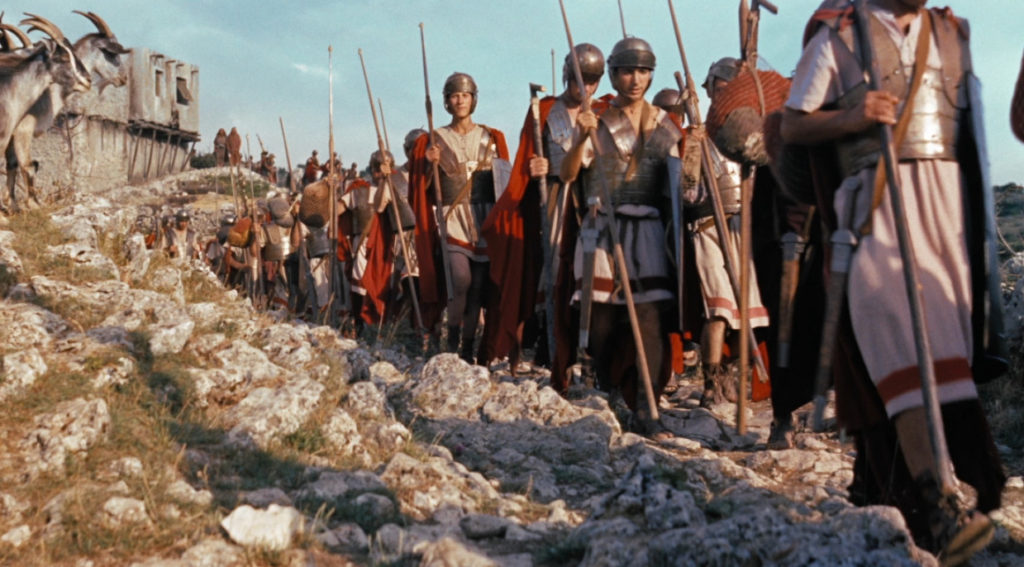
This huge production by MGM cost $15 million to make, earning it the title of most expensive movie ever filmed at the time. But it was also massively successful, earning it a spot right behind Gone With the Wind as the second-most successful film ever. It also won a record 11 Academy Awards, including Best Picture.
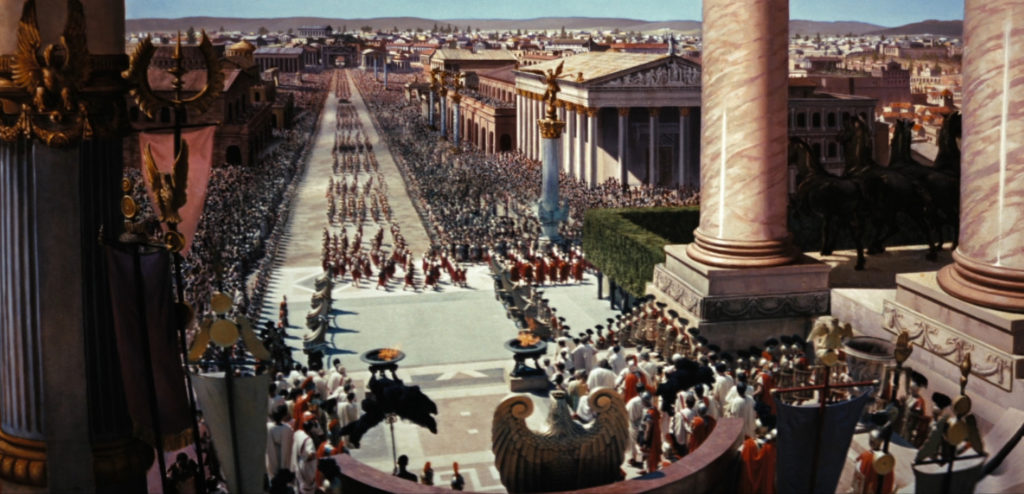
Charlton Heston—who would last into the early 1970s as Hollywood’s leading macho man—stars as Judah Ben-Hur, a Jewish prince who is sold into slavery by a friend and comes back seeking vengeance. It’s based on the 1880 novel Ben-Hur: A Tale of the Christ and is a remake of a 1925 silent film with a similar title. Lasting over three hours, it is perhaps most famous for the chariot race toward the end, which Film Atheist claims “beats the hell out of NASCAR and George Lucas’s rip-off in The Phantom Menace.”
Spartacus (1960)

Having been edged out by Charlton Heston for the title role in Ben-Hur, famed Hollywood actor Kirk Douglas got his partial revenge the next year in this lavish production by legendary director Stanley Kubrick.
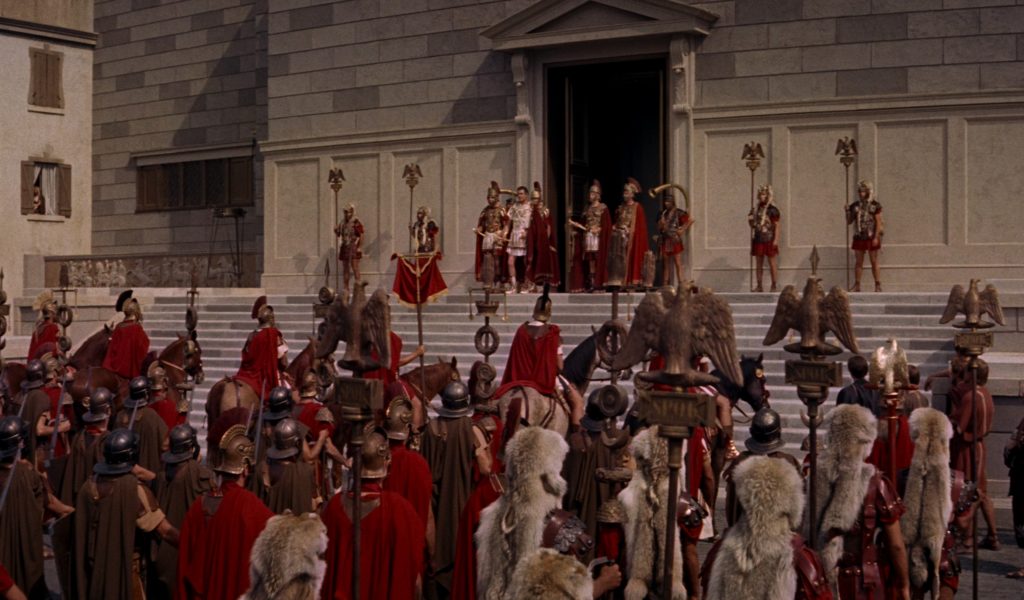
The film is based on the real-life story of Spartacus (Douglas), a Roman slave who led a slave revolt. The film’s open criticism of slavery, combined with the fact that the screenplay was written by blacklisted communist writer Dalton Trumbo, led some Hollywood luminaries such as John Wayne to boycott the film as politically subversive. However, newly elected President John F. Kennedy decided to spurn the boycott and attend the film.
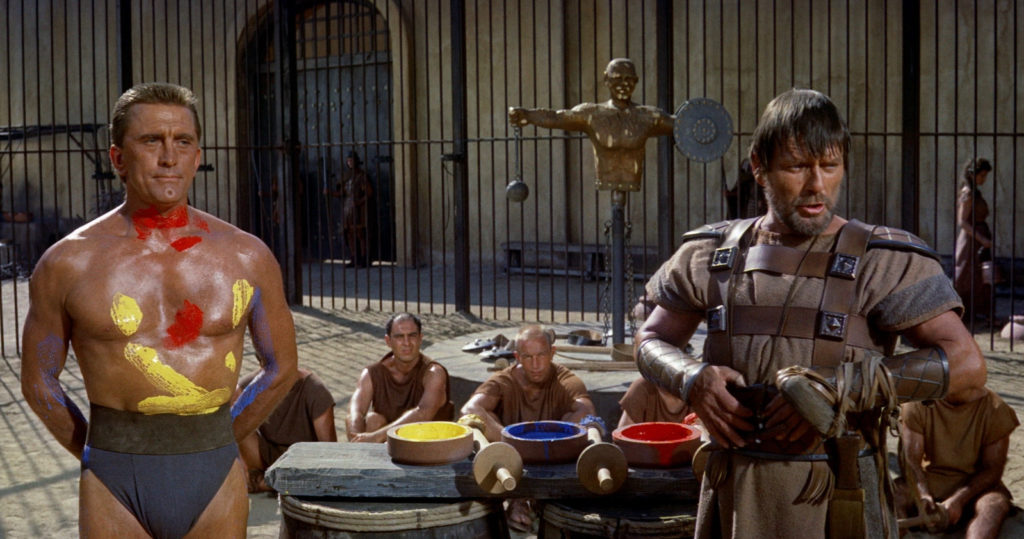
Cleopatra (1963)

Elizabeth Taylor stars as Queen Cleopatra VII of Egypt, the femme fatale who seduces Roman luminary Marc Antony (Richard Burton) in this three-hour epic that at the time was the most expensive film ever made. It is the third cinematic portrayal of Cleopatra’s story, after 1917’s silent epic starring Theda Bar and a 1934 production featuring Claudette Colbert. Much of the film’s pre-release hype involved the stormy off-screen affair between Taylor and Burton, who were both married to other people at the time. The Hollywood Reporter gushed over the film upon its release: “Power and passion are the twin and intertwined themes of Cleopatra, and they have never burned with greater intensity or amid such opulence as they do in this extraordinary film.”
The Fall of the Roman Empire (1964)
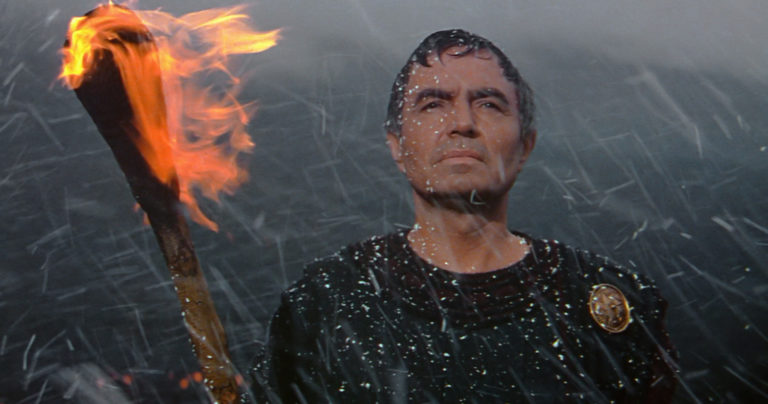
The film’s title doesn’t cover the entire fall of the Roman Empire, which took nearly 300 years. Instead, it fixates on the transfer of power between Emperor Marcus Aurelius and his corrupt and inept son Commodus. Bosley Crowther of The New York Times savaged the film: “”So massive and incoherent is it, so loaded with Technicolored spectacles, tableaus and military melees that have no real meaning or emotional pull, that you’re likely to have the feeling after sitting through its more than three hours (not counting time out for intermission), that the Roman Empire has fallen on you.” Decades later, however, the AV Club found the film more worthwhile: “The sets are enormous, the battle scenes well-populated, and the exteriors stunningly photographed and matte-painting-free….The story needs that sense of scope—the kind only conceivable in the movie-making world of 1964—in order to give impact to the chaos about to beset the Romans, and the long decline to come.”
A Funny Thing Happened on the Way to the Forum (1966)
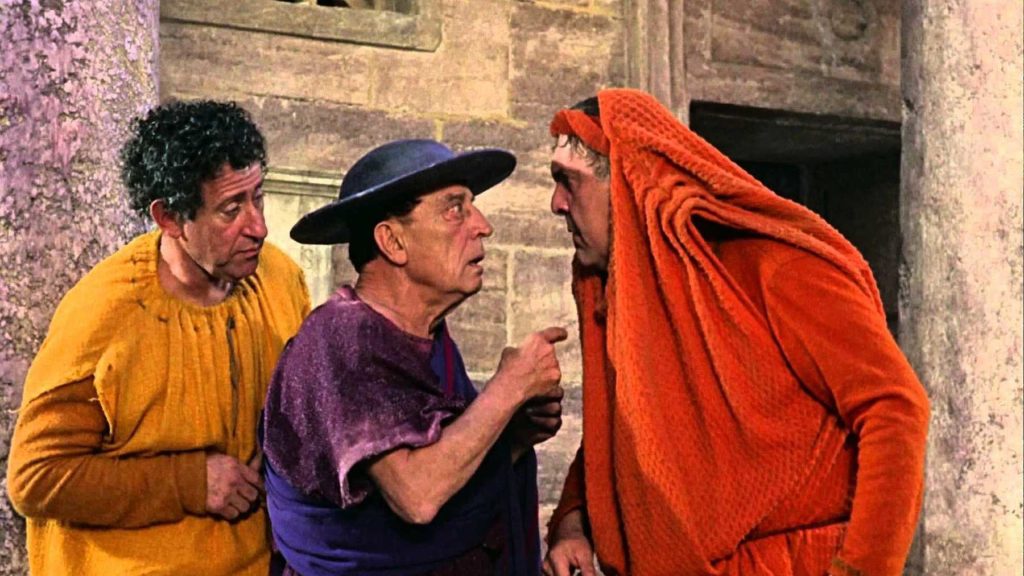
This outrageous slapstick film adaptation of a hit Broadway musical took lead actor Zero Mostel off Broadway and placed him in Hollywood while leaving most of the original’s Broadway show tunes behind. An irreverent and fast-paced farce, it is based on the work of the Roman playwright Platus. It stars legendary comic Buster Keaton in his final film appearance. Variety wrote: “Flip, glib and sophisticated, yet rump-slappingly bawdy and fast-paced, ‘Forum’ is a capricious look at the seamy underside of classical Rome through a 20th-Century hipster’s shades […] Generally assayed with satirical thrust and on-target accuracy, almost all of the performances are top-rung and thoroughly expert.”
Fellini Satyricon (1969)

Federico Fellini, Italy’s master director of the 1960s, based this surreal patchwork of stories on Satyricon by Petronius, who wrote during the reign of Emperor Nero. According to Fellini, “I am examining ancient Rome as if this were a documentary about the customs and habits of the Martians.” Roger Ebert gave the film four stars out of four and said the film “is a fantastical journey to a pre-Christian Rome that resembles no civilization that ever was, in heaven or on Earth. And it is a masterpiece.”
Julius Caesar (1970)

This is widely considered not only one of the worst film adaptations of a Shakespearean play in movie history, but also one of the worst Roman Empire movies in the entire canon. After it was released, few of its actors wanted to be associated with it. In particular, Jason Robards was targeted for scorn. According to Roger Ebert: “There’s hardly any way to describe how Jason Robards brings ‘Julius Caesar’ to its knees, but let me try. It’s a neat trick. He stares vacantly into the camera and recites Shakespeare’s words as if he’d memorized them seconds before, or maybe was reading from idiot cards.”
Monty Python’s Life of Brian (1979)
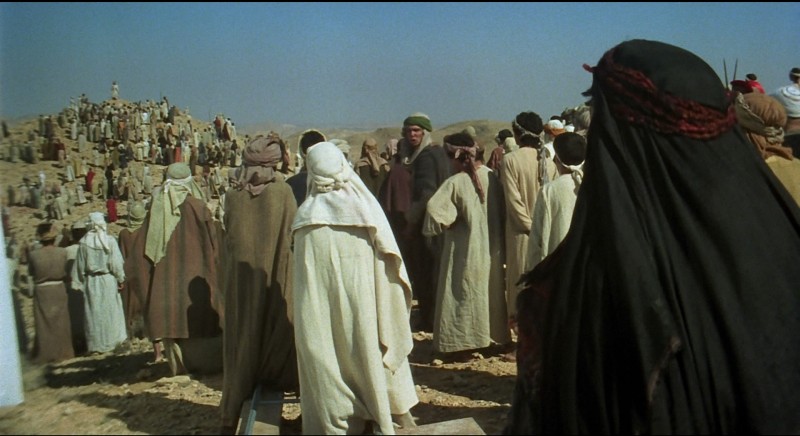
In a sprawling farce that more than one critic has called the greatest film comedy of all time, the Monty Python troupe tell the story of Brian Cohen, AKA Brian of Nazareth, a Jewish child who was born on Christmas in the stable right next to that of Jesus and who unwittingly becomes mistaken for a prophet throughout his lifetime. Life of Brian initially faced tidal waves of resistance and protests from religious groups but has gradually attained the status of a comedy classic. According to Roger Ebert, “‘Life of Brian’ is really more about movies than about religion: It finds its origins in those countless Biblical epics where Roman legions marched up and down while intrigue waxed hot and heavy in Pilate’s inner court.”
History of the World, Part I (1981)
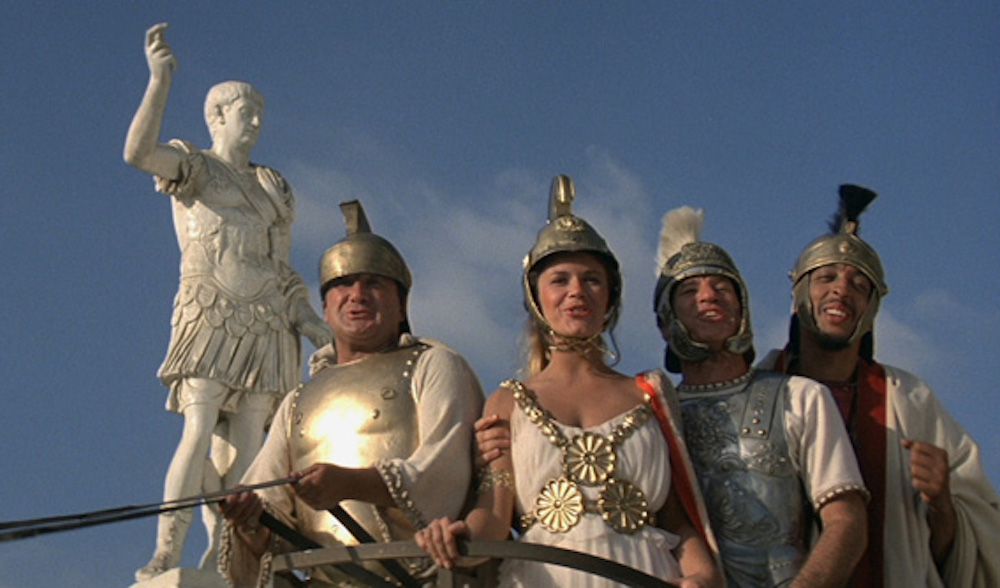
Comic genius Mel Brooks made a career out of parodying film genres: westerns (Blazing Saddles), monster movies (Young Frankenstein), and even a film-length tribute of sorts to Alfred Hitchcock (High Anxiety). Here he takes on the entire genre of historical set pieces and lands in five different eras: the Stone Age, the Old Testament, the Roman Empire, the Spanish Inquisition, and the French Revolution. In the Roman Empire section, Brooks stars as Comicus, a “stand-up philosopher” who is informed that he has a gig at Caesar’s palace—not the Las Vegas motel, but the actual palace of the former Roman emperor. But the emperor this time around is Nero (Dom Deluise), and many jokes are told at the expense of Nero’s girth. Then, along with an African slave, Comicus leads everyone in a chariot chase that is an obvious parody of Ben-Hur.
Titus (1999)
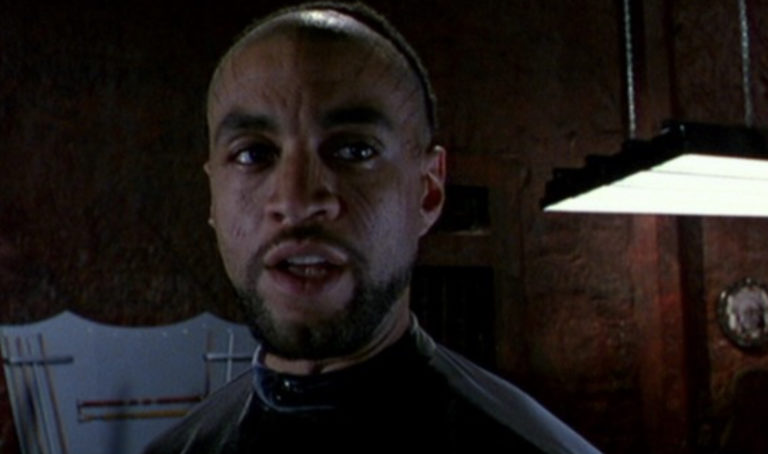
Anthony Hopkins stars as Titus Andronicus, a victorious Roman General who returns to Rome but declines a nomination for emperor in the first theatrically released film adaptation of the Shakespeare play. The mild twist at the beginning shows a boy playing with toys in a kitchen that is presumed to be set in the 1950s, only to be frightened by a bomb blast outside. After the boy hides under the kitchen table, he emerges to find himself back in the ancient Roman Empire.
Gladiator (2000)
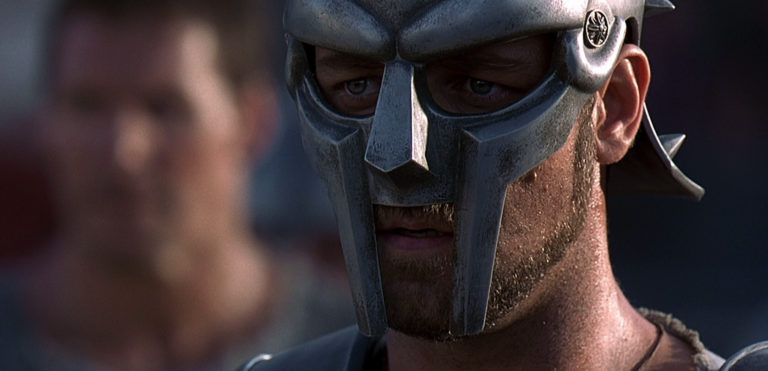
Russell Crowe won the Best Actor Oscar for his portrayal as Maximus Meridius, who is betrayed and becomes a slave when his friend Commodus pulls strings behind the scenes and becomes the Roman Emperor. The film’s success—it was the year 2000’s second-highest-grossing film—led to a reemergence of the “Swords and Sandals” genre in the new millennium. Not everyone was enthusiastic, though: Roger Ebert lamented the bleak atmospherics and referred to the story line as “Rocky on downers.”
The Passion of the Christ (2004)
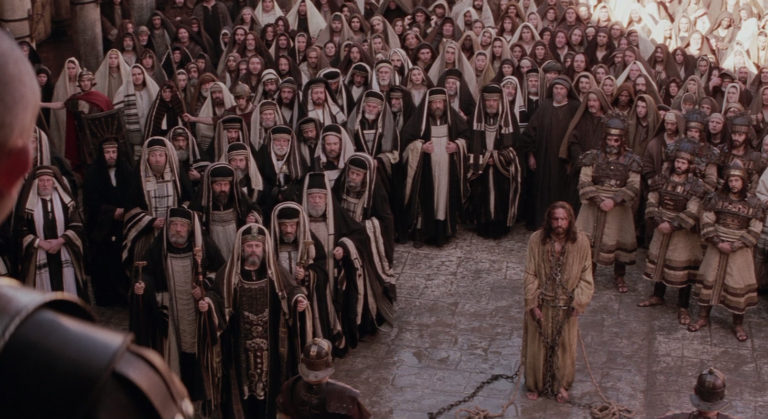
In 2006, Entertainment Weekly rated this Mel Gibson-directed epic as the most controversial film of all time. The dialogue is subtitled in English but spoken entirely in Hebrew, Latin, and Aramaic. The plot revolves around the Gospel accounts of the last 12 hours of Christ’s life—starting with the Agony in the Garden, through the betrayal of Judas and the Scourging at the Pillar, and ending with the Resurrection. The film is also agonizingly violent. Roger Ebert wrote: “The movie is 126 minutes long, and I would guess that at least 100 of those minutes, maybe more, are concerned specifically and graphically with the details of the torture and death of Jesus. This is the most violent film I have ever seen.”
Rome (2005)

This historical HBO drama series created by John Milius, William J. MacDonald, and Bruno Heller was originally scheduled to last five years but was canceled after two seasons. It is set in the first century BC during Rome’s crucial transition from Republic to Empire. Although it focuses on the rich and powerful, it also involves the life stories of two commoners named Lucius Vorenus and Titus Pullo. According to SF Gate, the series focuses on class struggles: “This is a series about class warfare, emphasis on the war. Some 400 years after the forming of the republic, the elite in Rome are fat and happy, wealthy and corrupt; presiding over an empire with steep class divides.”
Agora (2009)
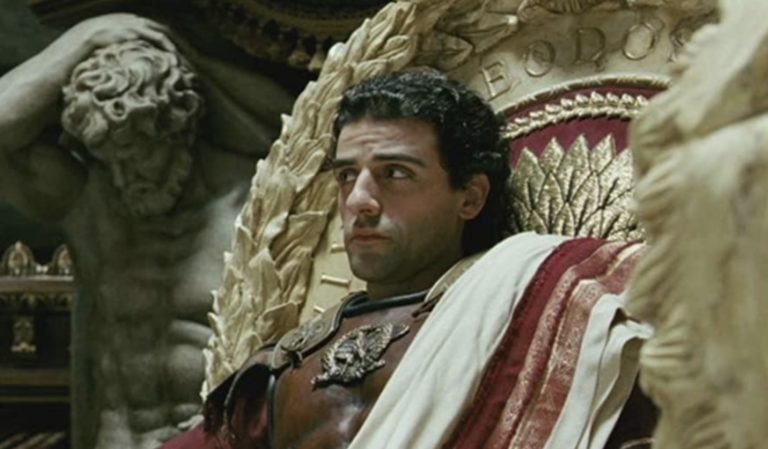
As do so many Roman Empire films, the central tension in Agora spins around the cultural and ultimately political struggle between Roman mythology and the emergent Christian class. Agora is set in Roman-controlled Egypt and involves a slave who converts to Christianity at the same time he falls in love with Hypatia, a real historical female figure who was a professor of philosophy and math at the University of Alexandria. Hypatia’s heresy is that she suspected that the earth revolved around the sun—which led to her brutal persecution by Christians, who had a geocentric view of the universe.
Centurion (2010)

In one of the few Roman Empire epics that is set outside the official boundaries of the Roman Empire, Centurion follows a ragtag group of Roman soldiers who find themselves trapped north of Hadrian’s Wall in Scotland, where they are constantly preyed upon by the primitive and savage Picts—a real historical tribe that used to paint themselves blue before going into battle.
The Eagle (2011)
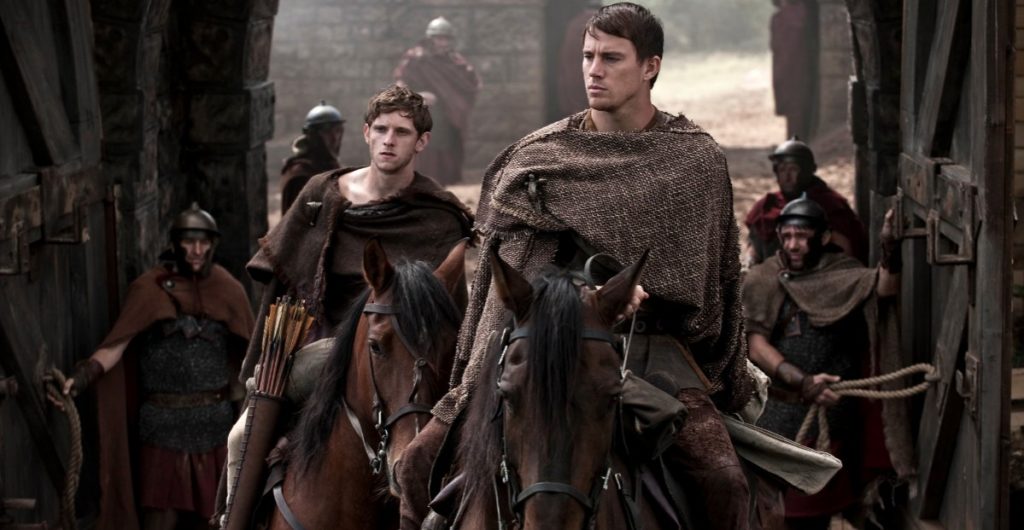
A young Roman soldier stationed in Roman-occupied Britain is tortured by the memory of his father’s defeat at the hands of Caledonian savages north of Hadrian’s Wall in Scotland. Based on the 1954 novel The Eagle of the Ninth, the plot involves the young soldier’s attempt to reclaim his father’s honor by recapturing his lost legion’s golden emblem of an eagle. The Austin Chronicle says: “The Eagle is rife with moral lessons about resentment toward occupying forces and the efficacy of waging battles on an enemy’s indigenous turf.”
More Movies About Ancient Rome
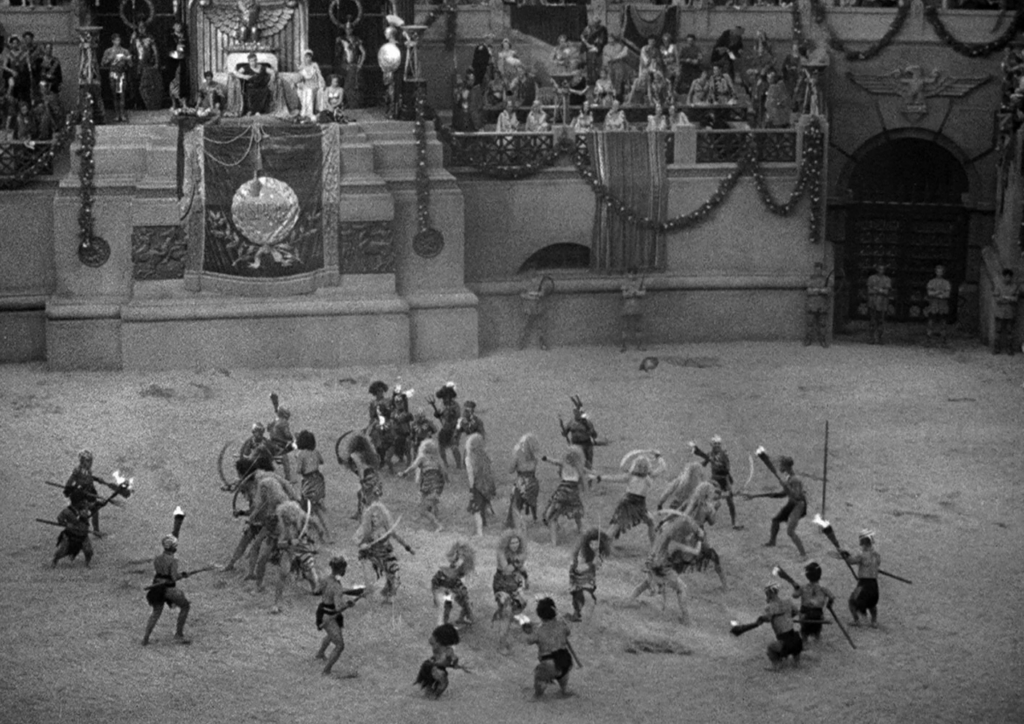
- Intolerance (1916) is a silent epic by D.W. Griffith broken into four different historical eras, one of which involves the persecution of Christ by the Roman Empire.
- Three Ages (1923) is Buster Keaton’s parody of Intolerance that’s set in the Stone Age, the Roman Empire, and the jazz era.
- The Sign of the Cross (1932) is Cecil B. DeMille’s lavish tribute to the ancient tensions between Christians and Romans.
- The Last Days of Pompeii (1935) is a big-budget drama set in the days when the eruption of Mt. Vesuvius buried Pompeii in lava.
- Roman Holiday (1953) is not technically about ancient Rome, but it does take place in the ruins of the once-great empire and is perhaps the most famous movie about Rome. It stars Audrey Hepburn.
- Demetrius and the Gladiators (1954) is a sequel to The Robe wherein St. Peter attempts to protect Christ’s robe from Emperor Caligula’s greedy clutches.
- Hercules (1958) is the first of an entire genre of Hercules movies in the late 1950s and early 1960s starring bodybuilder Steve Reeves in the title role.
- The Gladiator of Rome (1962) stars Gordon Scott as a slave who attempts to protect a Roman princess from assassination.
- The Two Gladiators (1964) involves a succession squabble between twin brothers, both of whom lay claim to being the next Roman Emperor.
- Giants of Rome (1964) involves a military battle between General Julius Caesar and hostile Druid armies.
- The Arena (1974) is perhaps the only Blaxploitation film in world history that’s set during the Roman Empire. Sex symbol Pam Grier stars.
- Sebastiane (1976) is a controversially homoerotic retelling of St. Sebastian’s torments in the desert.
- Caligula (1979) stars Malcolm McDowell (A Clockwork Orange) as the debauched Roman emperor in a film that was originally rated “X” due to graphic sex, violence, and all-around degeneracy.
- Attila (2001) centers around the Late Roman Empire clash between the Romans and the Huns.
- Imperium: Augustus (2003) stars Peter O’Toole in his final film role as the Roman Empire’s first potentate.
- Hannibal: Rome’s Worst Nightmare (2006) details the saga of the African general who tried conquering Rome on elephants.
- The Last Legion (2007) juxtaposes the fall of the Roman Empire with the emergence of the Arthurian legends.
- Pompeii (2014) tells the tale of a slave in 79AD who must rush to save his lover in the midst of a volcanic eruption.
- Dragon Blade (2015) pits Jackie Chan, Adrien Brody, and John Cusack as warriors fighting for control of the legendary Silk Road trade route.
